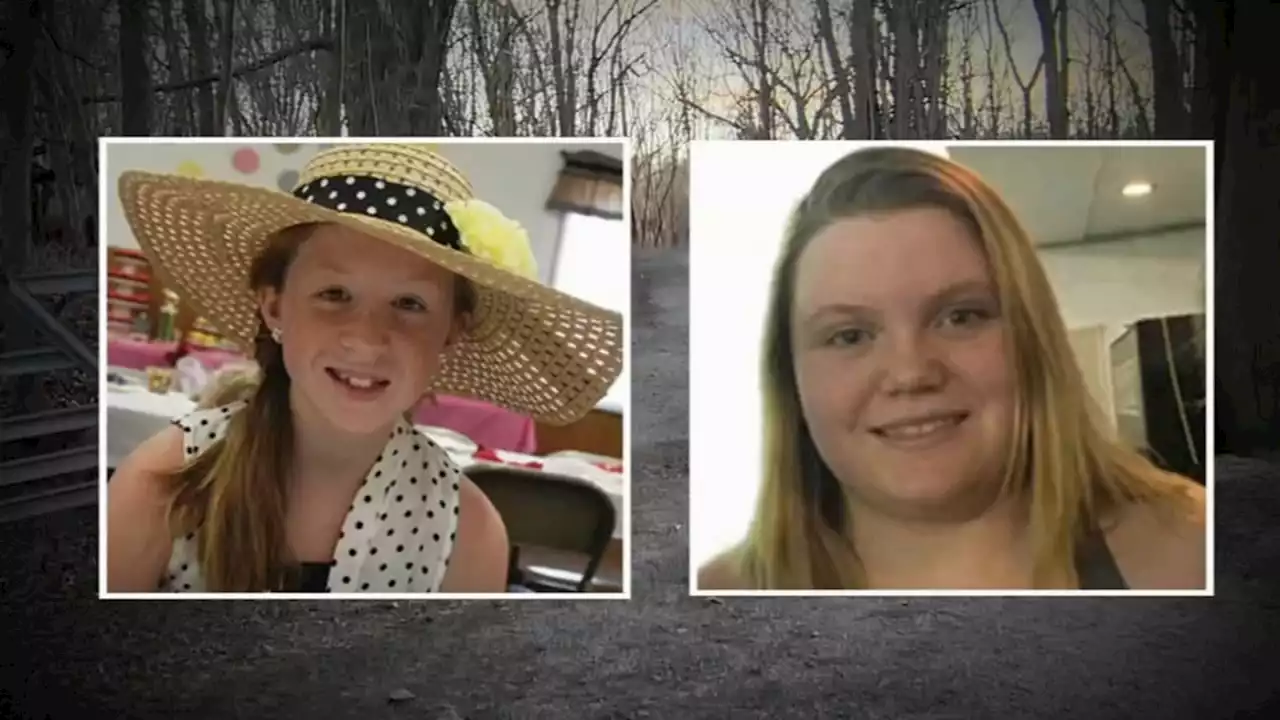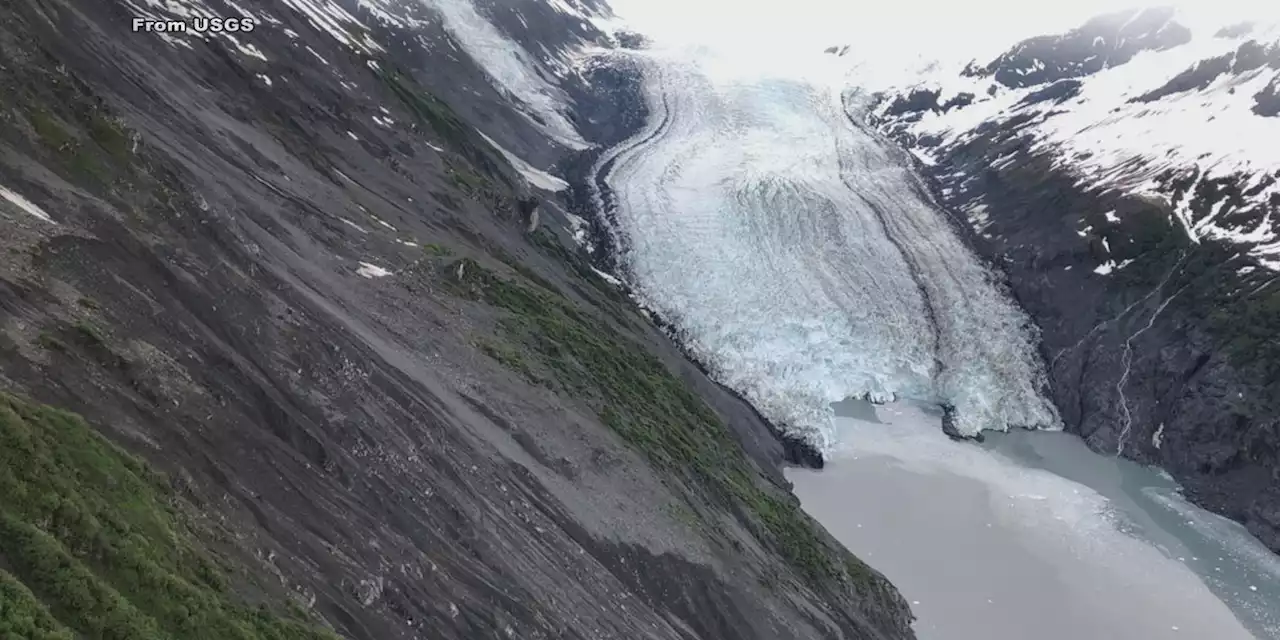The Barry Arm landslide is looming over the deep waters of Prince William Sound. Scientists say the tsunami the landslide could trigger has the potential to rival the run-up height of the world’s tallest tsunami, which was in Lituya Bay, Alaska.
Through the stories of people who hold a personal connection to the geology and with the help of experts, this episode of the Fault in the Facts will answer that question. Scientists will also explain a different landslide that created a big tsunami in the last decade, as well as a massive landslide that’s looming over and slowly slipping toward the waters of Prince William Sound.
Geologist Bretwood “Hig” Higman focuses a lot of his time studying landslides. He said a tsunami’s run-up is dependent on the slope the tsunami hits. He was inside Icy Bay Lodge when that massive piece of earth fell into the water, creating a tsunami that splashed more than 600 feet up the fjord walls.
“The reason it was initially discovered is that there was someone at Columbia University a quarter of the way around the world who was analyzing seismic data,” Higman said. “But occasionally, then there is a detection that no one else has found,” he said. “The Taan Fiord one was unusual in that my detection was big.”And he said no agencies that detect earthquakes had a record of it. So, he dug deeper into the data.
It was a natural phenomenon of epic proportions that was only uncovered, as a lone scientist thousands of miles away dug into the data. “The biggest focus is on the Barry Arm landslide. It’s a large 500 million cubic meter landslide in northwestern Prince William Sound about 50 kilometers or a little over 30 miles from the community of Whittier,” Staley said.The land sits high above the deep water, slowly creeping down the wall of Barry Arm.It hasn’t let go, but it’s been losing its grip. And scientists are watching it very closely.
“The biggest concern we have is just the uncertainty that we have and when the landslide itself would fail. And the fact that we may or may not see precursors to that failure,” he said. He said USGS researchers developed and vetted the current model, and they have a high degree of confidence in it. “If you see or hear any signs of a potential tsunami, something like a loud roar, an earthquake, unusual ocean behavior, you won’t know if that’s because the Barry Arm landslide has failed or if another landslide somewhere else, potentially closer by, has failed. And so, the best thing to do in that circumstance is to seek higher ground,” she said.
“What we don’t know about Barry Arm is whether or not that is going to fail all at once, all 650 million cubic yards, or whether it will be pieces that happen on the same day or decades apart or hundreds of years apart. We just don’t know enough about the structure yet to make those kinds of estimates,” Salisbury said.“There are certain signs that are causing us to be more concerned than we are now,” Staley said.“We’re always concerned about earthquakes and prolonged rainfall,” he said.
“I’ve been to a presentation that my brother had done,” Valisa Higman said. “He was talking about retreating ice creating instabilities in steep slopes. And so, I guess that was kind of in the back of my head.” “We thought, ‘Something’s wrong with my algorithm because it’s a new tool. It’s not being evaluated yet,’” she said.“And sure enough, this huge section of the mountain, it’s actually rotating,” Bretwood Higman said.
A cataclysmic event in Southeast Alaska more than 60 years ago shares similarities with a landslide hundreds of miles away that holds the potential to cause destruction and leave a death toll. All three landslides – Lituya Bay, Taan Fiord and Barry Arm – have a common factor. They were once held up by glaciers and left unsupported as the ice quickly melted.
He said he’s found a few unstable slopes in Alaska. While most of them are unlikely to threaten people, there are a few others he’s studying carefully.Lawmakers are working to help give scientists more resources to assess landslide hazards around the country.
United States Latest News, United States Headlines
Similar News:You can also read news stories similar to this one that we have collected from other news sources.
 Can what happened in Lituya Bay happen in Southcentral Alaska? — Pt. 1Can something like what happened in Lituya Bay happen in Southcentral Alaska? The last Fault in the Facts episode focused on the world's tallest tsunami, which was caused by a landslide in Lituya Bay, Alaska in 1958. In this episode, we look at the research behind the Lituya Bay event and expand on it. Hear about a different landslide that created a big tsunami in the last decade – and a surprising fact about it.
Can what happened in Lituya Bay happen in Southcentral Alaska? — Pt. 1Can something like what happened in Lituya Bay happen in Southcentral Alaska? The last Fault in the Facts episode focused on the world's tallest tsunami, which was caused by a landslide in Lituya Bay, Alaska in 1958. In this episode, we look at the research behind the Lituya Bay event and expand on it. Hear about a different landslide that created a big tsunami in the last decade – and a surprising fact about it.
Read more »
 Khloé Explained Why She Finds It So Difficult To “Move On” From Tristan And Said She’s Reprogramming Herself To “Unlove” Him“The repetition, the routine — when something good happened, I would call Tristan.”
Khloé Explained Why She Finds It So Difficult To “Move On” From Tristan And Said She’s Reprogramming Herself To “Unlove” Him“The repetition, the routine — when something good happened, I would call Tristan.”
Read more »
 Arrest made in Delphi murders of 2 teens in 2017; suspect worked at local pharmacy, residents sayAn arrest has been made in the Delphi murders of two teens, Libby German and Abby Williams, who were found dead near a walking trail in 2017.
Arrest made in Delphi murders of 2 teens in 2017; suspect worked at local pharmacy, residents sayAn arrest has been made in the Delphi murders of two teens, Libby German and Abby Williams, who were found dead near a walking trail in 2017.
Read more »
 Afternoon Briefing: Children could face triple ‘combo’ of illnessesGood afternoon, Chicago. Here's what is happening today. - Children could face triple 'combo' of illnesses - Man charged in West Rogers Park fatal shooting - 5 things to watch in the Bears-Cowboys game
Afternoon Briefing: Children could face triple ‘combo’ of illnessesGood afternoon, Chicago. Here's what is happening today. - Children could face triple 'combo' of illnesses - Man charged in West Rogers Park fatal shooting - 5 things to watch in the Bears-Cowboys game
Read more »
